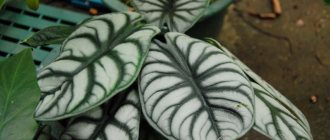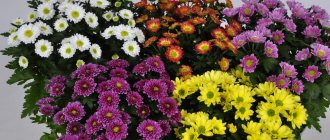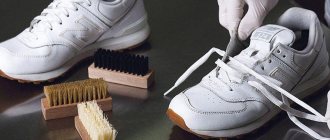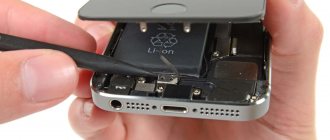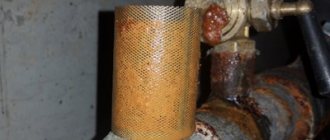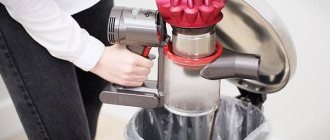Author: Elena N. https://floristics.info/ru/index.php?option=com_contact&view=contact&id=19 Category: Houseplants Published: January 24, 2019Last edits: January 11, 2021
- Cuttings
- Hydrangea turns yellow
plant (lat. Hydrangea) belongs to the genus of flowering plants of the Hydrangeaceae family, numbering about eighty species, among which there are small trees and shrubs. In the wild, hydrangea grows in both Americas, as well as in China, Japan and other countries in East and South Asia. The plant was named in honor of a certain princess of the Holy Roman Empire, whom no one remembers, and the name “hydrangea ,” which translated from ancient Greek means “vessel of water,” was given to hydrangea by systematic botanists for its exorbitant love of moisture. In Europe in 1820, the plant appeared as a house hydrangea, and only later it began to be grown in gardens. Since the hydrangea bush settled in our homes, breeders have not stopped their experiments in developing new varieties and varieties. Today, hydrangea in a pot on a veranda, terrace or balcony is as common as hydrangea in the garden.
Types and varieties of indoor hydrangea
Hydrangea is a plant whose height reaches one and a half meters. Belongs to the type of subshrubs. Has spreading leaves. They have small notches along the very edge. It is distinguished by very large inflorescences that reach up to 30 cm in length.
Varieties have been bred to create a large palette of colors. Let's look at the most common ones for home floriculture.
- Tree-like. A shrub whose height reaches 3 meters. The leaves are large and fleshy. Bright green hue. The flowers form a spherical sphere and reach a diameter of 25 cm. Flowers are most often colored milky or beige. One of the most unpretentious varieties.
- Large-leaved. The length reaches 2 meters. Suitable for both home growing and greenhouse growing. The leaves are quite large. The shoots are always light green. The variety is resistant to cold, so even in the winter season it feels great on a cold window.
- Paniculata. Looks like a large spreading shrub or small tree. The height reaches 6 meters. The leaves have an elongated shape. And the shoots turn brown with age. The plant is resistant to cold. The inflorescences gradually form a small pyramid. They have shades from milky to blue. By autumn, the flowers acquire a reddish or even brown tint.
Flowers also differ in the color that is inherent in them during flowering. There are varieties:
- red sensation;
- Early Blue;
- Europe;
- star;
- linear and so on.
However, the color of the inflorescences is affected not only by the variety, but also by the composition of the soil. For example, if it is sour, then a blue tint appears in the flowers. If it is more alkaline, then the pigment is pink or red. If the soil is neutral, then you will get boiling white flowers with milky splashes.
Botanical description
Indoor hydrangea is a perennial subshrub with opposite, large, toothed, ovoid leaves 10 to 15 cm in length. The inflorescences-balls are also large - up to 35 cm in diameter, umbellate, corymbose or in the shape of a brush, consisting of two types of flowers: large sterile ones at the edges of the inflorescence and small fertile ones in the middle. The color of the inflorescences depends on the pH value of the soil: acidic soil gives them a blue tint, neutral - white or cream, and alkaline - lilac or pink, and the flower petals are colorless, and the brightly colored sepals of the flowers give the inflorescences tint and decorativeness. The fruit of hydrangea is a multi-seeded capsule. At home, hydrangea can reach a height of one meter.
How to choose hydrangea in a store
It is believed that it is better to purchase flowers in specialized stores.
The first thing to do is look at the stem. It should be dense, elastic, and have an expensive green color. There should be no brown or yellow growths on the leaves. They should be juicy and bright green. If the hydrangea leaves are limp, dry at the edges, or have white or yellow spots on them, you should refuse to purchase.
Carefully examine the hat of flowers. It should be dense, rich, bright colors. If the cap is pale, and the flowers begin to fall when touched lightly, it means that the plants did not receive enough nutrients.
There is one general rule that should be applied to choosing a flower - it should look healthy, nourished and moisturized.
Beneficial features
Possessing positive, bright energy, the flower spreads calm tranquility. From the point of view of Feng Shui, it has many useful properties:
- extinguishes mutual hostility, softens conflict in communication;
- in a home environment normalizes family relationships, helps to achieve mutual understanding;
- contemplation of hydrangea relieves mental fatigue after an incident or stress, helping to calm down;
- a flowering plant relieves bad mood, negativity of others, bad thoughts.
On a note. In order for the beneficial properties to be fully revealed, optimal conditions for growth are selected for the flower.
Care and replanting after purchase
It is not recommended to replant hydrangea immediately after purchase. The plant must get used to new conditions. Give her 2 weeks to 1 month to adapt.
In the future, the transplant procedure should be carried out at least once every 3–4 years.
If you ensure annual replanting into larger pots, you can ensure the fullest blooms your hydrangea can produce. The roots of the plant grow in width, so the volume of the pot must match.
Choose a pot that is slightly larger than the diameter of the one you purchased the flower in.
While the plant adapts, you can gradually acquire components for the substrate. You will need 1 part sand, two parts peat, two parts deciduous soil and 4 parts turf soil. All this is mixed and poured into the pot.
Do not forget that during the first stages of life in a new room, hydrangeas will require additional care in the form of fertilizing. It is better to buy mineral fertilizer intended specifically for indoor flowering plants. You can buy it in a specialized store. It is important not to overdo it, so dilute the fertilizer according to the instructions and water the flower in the amount indicated on the package.
Hydrangea does not like direct sunlight, but loves warmth and diffused light. Therefore, it is better to place it on a shaded window.
As soon as the hydrangea gets stronger, you can take care of it and replant it.
At first after purchase, namely, the first two weeks, it is better not to overwater the plant. It is necessary to moisten the soil as it dries. But spraying leaves and flowers from a spray bottle is highly recommended. This procedure must be performed once every two days.
Growing from seeds
This propagation method cannot be called simple and is suitable for experienced gardeners. To grow hydrangea at home in a pot from seeds, prepare a suitable substrate. To do this, mix turf soil, humus and leaf soil in equal parts. Add half a part of peat and sand to this mixture.
Start sowing at the end of winter. Pour the substrate into a suitable bowl and distribute the seeds evenly over the surface without embedding them in the soil. Sprinkle the soil with warm water and cover the planting with glass. Place the greenhouse in a warm and bright place. To ensure that the seeds germinate, keep the substrate moist.
When shoots appear, remove the glass. When two true leaves appear on the seedlings, plant them in deeper containers filled with soil of the same composition. When the plants are strong enough, transplant them into individual pots with a diameter of 7 cm.
Caring for hydrangea at home
Lighting for indoor hydrangea
If you choose the right lighting for a flower, it will delight you with its color for a long time.
It is important to choose the right place here. This is necessary so that there is an abundance of color. However, the leaves and flowers of the plant should not be exposed to direct sunlight. Therefore, you need to place the flower at a distance of approximately 3–4 m from the window. In this case, the plant will feel ideal.
Temperature for hydrangea
In terms of temperature, the plant is capricious. The ideal room temperature is between 18 and 23 °C. It is ideal for hydrangeas. The plant should not be exposed to drafts, as it may die.
In winter, this flower can be placed in a room where the temperature is 10 °C. Then the hydrangea will go into a short hibernation and accumulate strength until the new summer season.
Don't forget about watering. The water used to irrigate the land must be at room temperature. Under no circumstances should you use water from the refrigerator.
Watering hydrangea
Caring for hydrangeas in terms of watering should include regularity.
- Hydrangea loves fresh water very much. It can be classified as a moisture-loving plant.
- For irrigation, settled water that is at room temperature is ideal.
- The hotter it is outside the window, the more often you need to irrigate the soil. Don't forget to spray the flowers and leaves with a spray bottle. However, you should not be overzealous with watering. It needs to be renewed as the soil dries out. If you overwater it, the hydrangea can easily rot.
- If the hydrangea leaves begin to turn yellow, this means that it lacks acid. Therefore, sometimes you need to give her a shower with acidic water. To do this, mix 5–8 drops of lemon juice in one liter of water.
Air humidity
Hydrangea loves humidity in the air. Therefore, when the heating season begins and the air is dry, the plant suffers greatly. Therefore, do not forget to spray it with a spray bottle.
If you have a humidifier, place the plant pot nearby. It is enough for hydrangea to spend about half an hour next to a humidifier to stock up on moisture for several days ahead.
Watering and humidity
Regular and abundant moistening of the flower is the basic rule of care at home. Water the hydrangea almost every day in the summer, avoiding the soil from drying out. In spring and autumn, moisten the flower when the top layer of soil dries. In winter, during dormancy, if you store hydrangea in the basement, irrigate the soil no more than once a month. Flowers wintering on a glazed balcony do not need moisture.
Take a responsible approach to the quality of water for irrigation. It needs to be settled, filtered and frozen, and then thawed to room temperature. Once a month, moisten the soil with water acidified with lemon juice (5 drops per liter).
Hydrangea does not tolerate dry air well. Therefore, it is important to maintain high humidity near it. Do not place the pot near heat sources and regularly spray the beauty's foliage. It is also useful to place containers of water or a special air humidifier next to the pot.
Feeding
In the spring and summer, Hydrangea enters the active stage. At this stage, for enhanced growth, she will need additional amounts of useful minerals and organic substances. Therefore, it is at this stage that it is worth using organic fertilizer.
Unfortunately, if you neglect such care, the plant will stop blooming and develop further.
When watering several times a week, you need to add a few drops of potassium permanganate to the water.
Winter care does not involve the use of fertilizing.
Gardeners say that gibberellin solution is successful in caring for hydrangeas. Approximately 0.1 g per 1 liter of water is used. Thanks to the composition, hydrangea quickly enters the flowering state.
Trimming
The pruning procedure is mandatory in order to maintain the attractive appearance of the plant. For this procedure you will need a well-sharpened knife or pruning shears. The cut should be sharp and even.
During pruning, weak leaves and stems that have begun to dry out or rot are removed. It is also necessary to trim the top of the plant in order to form a more luxuriant crown.
It is ideal to prune twice a year. This is in the fall, when the flowering period has passed, you need to remove weakened leaves and in the spring, when you need to remove weakened shoots.
During the flowering period, the pruning procedure stops. It begins when the first faded flowers or leaves appear. They are the ones that need to be removed so that the plants do not rot.
Rest period
The dormant period of hydrangea begins in the cold season. As a rule, during autumn frosts. Plants go dormant, begin to consume less moisture and stop blooming. To allow the plant to gain strength before the next season, it must be placed in a room with a temperature of no more than 10 degrees. Do not forget about watering as the soil dries out.
Hydrangea will resume its vitality in late March - early April, when the sun begins to actively warm up.
Popular varieties
The hydrangea family includes about 80 species. Indoor hydrangeas are compact and low-growing. Most of them are bred artificially, specifically for apartment conditions.
- Hydrangea paniculata. A low variety no more than half a meter. Buds form in July, mass flowering begins only at the end of August. The flowers are white, often tinging with purple and crimson. It is characterized by increased cold resistance.
- Large-leaved hydrangea. Tall shrub up to two meters. It is distinguished by very large ovoid leaves. The color of the flowers depends on the composition of the soil. Blooms in late summer. Most often used for growing outdoors. Low-growing varieties are chosen as pot crops.
- Oakleaf hydrangea. The average height is about a meter. The leaves are shaped like oak leaves. The color of the leaves is green in summer, becoming reddish in autumn. Flowers also change color as they bloom.
- Hydrangea. In temperate latitudes it is often grown in gardens and parks. Height - from one to three meters. The leaves are large, the inflorescences are spherical or flattened, white.
Important information! The flower belongs to deciduous crops. In winter, it sheds its leaves even in warm weather, entering a dormant phase. During this period, the plant is kept in a dark, cool room and watered occasionally. The flower rests for about 2-3 months and starts growing again in the spring.
Reproduction
Hydrangea can be propagated in various ways. Some are more, some are less effective. Let's look at the nuances of each method.
Propagation by cuttings
Propagation by cuttings is the easiest way. The most favorable time for this is January or February.
Take a closer look at the root shoots. Cut the cuttings so that there are no more than three nodes on the branch. Their length should be approximately 8 cm. All leaves should be removed from the bottom of the cut root. The upper leaves should be shortened exactly by half.
The cut on the lower side must be treated with a special root stimulator, which is sold in specialized stores.
The cuttings must be planted in a specially prepared substrate, which consists of peat and sand. Provide maximum humidity, which will promote rapid root formation. Ideal temperature is up to 20 degrees.
Some housewives advise covering the cuttings with special glass jars. However, once a day you need to leave the plant to air for several hours, removing the glass protection. The plant needs constant moisture, so the soil needs to be watered and the leaves should be sprayed with a spray bottle.
After just one month, the cuttings can be planted on prepared peas.
Reproduction by dividing the bush
Dividing the bush is another common method. However, you need to act with caution so as not to spoil the entire bush.
The shoots are evenly shortened. The bush is divided into several parts, carefully freeing the roots. Parts of the plant need to be distributed into different pots into a specially prepared adversary and watered.
You can apply a mulching procedure, which is designed to root the plants faster. It is better to carry out this procedure in the spring so that by autumn the plant feels comfortable in the pot.
Propagation by seeds
When growing seeds, the procedure must be carried out already in February.
- Prepare the soil, which consists of turf and humus.
- Additionally, admixtures of peat or sand can be added to it.
- Purchase special containers that are designed for growing.
- Scatter hydrangea seeds on top. They do not need to be buried in the ground.
- Water the soil well.
- Then you need to cover the container with cling film or glass. Every day you need to ventilate the crops and moisten them with a spray bottle. Remember to keep the soil mostly moist, but not wet.
- As soon as the first shoots appear, the cling film can be removed.
When two leaves appear, they need to be picked in a container.
Reproduction by layering
This type of propagation is best done in March. Used for plants that grow in open ground. However, it can also be used for home flowers.
- The soil around is dug up and compared.
- Small grooves are made to a depth of 2 cm. Approximately one shoot is placed in them. By the way, the shoots need to be cut off from the bottom of the bush.
- They are laid parallel to the ground and covered with earth.
- Then you need to constantly spray the area with a spray bottle to achieve adequate moisture.
- As soon as the roots appear, you need to make a constriction of soft wire. It is carried out in three turns.
- The more the wire is pressed, the faster roots will appear from this place.
By the end of summer, several months after the start of reproduction, several young shoots appear on the cuttings. Once they reach a height of 20 cm, they can be transplanted into a separate pot.
The necessary conditions
Soil requirements
Hydrangea at home and in the garden develops well in acidic or slightly acidic clay soils and grows poorly in alkaline sandy soil mixtures.
How to replant hydrangea from a pot
The composition of the soil mixture directly affects the color of the inflorescences. In more acidic conditions the plant blooms with blue buds, in lower acidity – pink, in neutral – white.
To plant indoor hydrangea, a ready-made substrate designed for growing azaleas and begonias is often used.
You can prepare the soil mixture yourself by mixing turf, leaf humus, coarse sand and peat (3:3:2:1). Oxidize the soil by adding pine needles, peat mixture or sawdust. Wood ash, chalk and lime are used for alkalization.
Requirements for a flower pot
The root system of hydrangea is fibrous with a superficial horizontal arrangement. A wide pot of shallow depth is better suited for growing a flower. There should be drainage holes at the bottom.
For a young seedling, choose a container with a diameter of about 9-10 cm. Then select it 2-3 cm wider than the previous one.
Too large a container causes fattening of the plant, which, first of all, in the conditions of free space, will begin to build up the root system and only after the space has been completely developed will it begin to sprout fresh shoots.
The most suitable material for a flower pot is clay or ceramics, which have porosity, which ensures breathability and good evaporation of excess logs through the walls. This helps avoid water stagnation.
When planting in plastic containers, you should pay special attention to the organization of watering. Plastic does not allow water to evaporate, which causes root rot.
Diseases and pests
Hydrangea is prone to diseases, which form on it with surprising frequency.
- Gray rot. Appears on the leaves if you overdo it with moisture. Reduce watering and make it a rule to treat the flower with a special Bordeaux mixture.
- Spider mite. When the air is dry, on the contrary, spider mites or aphids appear on the plant. To destroy this scourge, you need to water the hydrangea with a soap solution or a special product from the store.
- Downy mildew. Appears at high humidity. Eliminated through the use of drugs that contain copper.
- Nematode. A nightmare for hydrangeas. If the plant is affected by more than 50%, then, unfortunately, it cannot be saved and will have to be thrown out.
Possible problems
Pests and diseases
If the humidity is excessively high, this can lead to damage to home hydrangeas by gray rot. To save the plant, spray it with a solution of Bordeaux mixture. Also, high humidity can cause the development of downy mildew. In this case, the bush is treated with a solution of a fungicidal or copper-containing agent.
If the air in the room is too dry, aphids or spider mites may settle on the plant. To get rid of them, the bush is sprayed 2 times with a solution of Actellik or soap with a break of 7 days.
Hydrangea turns yellow
Hydrangea foliage may begin to turn yellow for the following reasons:
- poor or infrequent watering;
- the plant needs nitrogen;
- the bush is affected by chlorosis (this occurs due to the substrate in the container being too alkaline).
To save a subshrub, simply correct existing care errors.
Hydrangea is drying
Sometimes gardeners are faced with the fact that the plant begins to dry out. This may happen due to:
- violations of the irrigation regime;
- not enough frequent moisturizing from a spray bottle;
- untimely fertilizing;
- injury to the root system during transplantation.
Hydrangea falls
Most often, the leaves begin to fly off after they dry out. Remember that this is a moisture-loving plant, and therefore you need to water and moisten it with a spray bottle regularly.
Hydrangea doesn't bloom
Most often this is due to a warm winter. A bush that is exhausted after abundant long flowering cannot restore its strength in a warm and bright place. It requires coolness and darkness during its dormant period. In such a place, the hydrangea should stay from 70 to 80 days. A basement or dark room is suitable for wintering the bush. Cut off all its foliage, shorten powerful stems by ½ part, and cut weak stems at the root. The prepared bush along with the pot is transferred to a cool place and laid on its side. The crop is sent for wintering in December, and in February it already begins to come to life. If everything is done correctly, the bush will bloom magnificently and for a long time every year.
Why doesn't indoor hydrangea bloom? | toNature.Info
Preparing for winter
Before sending the hydrangea into hibernation, it must be prepared on the eve of the onset of cold weather.
The plant cannot overwinter in Russian winter conditions without appropriate insulation. This also applies to indoor hydrangeas. You should not place hydrangea on an open balcony where the temperature is below 0 degrees. The ideal temperature for wintering hydrangea is +10 °C.
Before you prepare your hydrangea for winter, you need to do the appropriate pruning. To do this, faded flowers, dry or, conversely, too limp leaves are removed. If there are individual shoots that have grown in length but are very dry, or vice versa, they show signs of rot, they also need to be cut off.
After the procedure is completed, the plant must be brought to a new watering regime. Now you need to water less often so that the hydrangea does not rot by winter.
Prepare a room to place the flower. The temperature in it should be between 8–15 degrees, no higher and no lower. Place the plant in this room and make sure that it will not be exposed to drafts.
Helpful information
Find out more about caring for indoor hydrangea:
If you find an error, please select a piece of text and press Ctrl+Enter.
Hydrangea (Hydrangea) is a beautiful flowering plant of the Hydrangea family, popular all over the world. It is grown in the garden and on the windowsill . Among the many species there are shrubs and trees. The homeland of hydrangea is the latitudes of Japan, China, South and North America with a temperate continental climate. Important conditions for good development include high air humidity, plenty of diffused daylight and moist nutrient soil.
It grows at home to a height of no more than a meter and has the appearance of a bush. The lush crown is filled with ovoid leaves with a jagged edge, the size of which ranges from 9 to 14 m in length. The most important advantage of the plant is its large spherical inflorescences of various shades of white, pink, and blue.
Be sure to check out the beautifully flowering hoya and zonal pelargonium plants.
| High growth rate. The planted cuttings bloom the next year. |
| Blooms from April to November. |
| The plant is easy to grow. |
| Perennial. Can be grown for one year and taken from cuttings. |
Changing the color of hydrangea
Not all hydrangea owners are happy with its color. You may not know, but it's easy to change.
- Make the soil more alkaline. Then bright pink flowers will appear along with a blue or white tint.
- If you make the soil more acidic or regularly water the plants with water and a few drops of lemon juice, you can achieve a blue tint.
- If the soil is in normal condition and the plant is regularly watered with water with the addition of a small amount of potassium permanganate, then the hydrangea will acquire a white tint.
Landing
Growing hydrangeas in pots in the garden allows you to admire the charming plant all year round. In summer they grow outdoors, which makes them easier to care for. And in winter they move home. Of course, if there is a fairly cool room. In order to achieve success in this matter, you need to remember that the plant is primarily a garden plant.
By limiting it to the size of the pot, you need to pay special attention to the quality of the substrate. The plant should not suffer from lack of nutrients
It is best suited to slightly acidic soils. Alkaline substrates must be removed immediately; growth in neutral ones will be subject to some restrictions. You need to know that the color depends entirely on the PH of the soil. Only in acidic soil will the plant show its varietal characteristics. In a neutral, blue hydrangea begins to turn pink. Most often, flower growers believe that the plant is pollinated. Knowing this, you can monitor the acidity of the soil. By raising and lowering it, you will change the color of the flowers as if by magic.
Difficulties in growing hydrangea
Leaves are drying
If the leaves of a hydrangea dry out, it means that it does not have enough moisture. Give preference to watering with a spray bottle, which should be done daily. Also, do not forget about ventilating the room.
Watering should be done as the soil dries out. Turn on a humidifier near the hydrangea for several hours.
The leaves are falling
If leaves fall, then, unfortunately, this is also evidence of improper care. Falling from dryness indicates a lack of moisture and the proper amount of nutrients.
If the leaves simply wither and fall off, most likely the hydrangea is not getting enough sunlight and warmth. Therefore, raise the room temperature to the desired level.
What to do if the hydrangea has withered
If the hydrangea has wilted by 40%, you can try to revive it. To do this, water it with water containing potassium permanganate. Additionally, copper sulfate and other fertilizers are diluted and poured into the soil.
If it was not possible to rehabilitate the hydrangea, you should say goodbye to it. And the housewife needs to analyze what caused the plant to wither so quickly.
Hydrangea does not bloom, what to do
The plant will bloom if the following conditions are met.
- When the rest period ends.
- It was properly prepared for winter.
- Receives the proper amount of nutrition and feeding.
- All flower diseases were removed.
If you missed any of these points, then, most likely, this is why the hydrangea does not bloom. However, the reason may lie in completely different factors. For example, the roots were damaged during transplantation. The plant directs all its forces to restore their integral structure and not wither. Therefore, flowering is temporarily delayed.
Many people call hydrangea a capricious plant. After all, to care for it you need to very correctly select the necessary standards for temperature and humidity indicators. However, a housewife who is not afraid to mess with hydrangea and is ready to care for it both summer and winter can decorate her home with an incredible color that will delight you all spring, summer and autumn.
Fertilizers
Starting in February, when indoor hydrangea produces new shoots, proper care for it consists of feeding it with organic fertilizers and minerals once every half month. You can buy a complex fertilizer designed specifically for flowering plants. Additionally, you can water it with a weakly concentrated solution of potassium permanganate. A lack of nutrients can cause hydrangea to stop growing and producing buds. In winter, it does not need feeding.
If you want inflorescences of different shades to bloom on one bush, fertilize each half of the soil differently.
For blue coloring, choose appropriate plant care:
- add peat, sawdust or coniferous soil to the soil;
- water this side of the pot with a solution consisting of 8 g of potassium alum dissolved in a liter of water;
- add iron salts to the soil (according to gardeners, even an ordinary iron nail that can be buried in the ground will do for this);
- You can spray the flower with a solution of 50 g of aluminum citrate and 1 liter of water.
And add lime, chalk or ash to the other half of the soil, then the inflorescences will acquire a lilac or pink tint.
